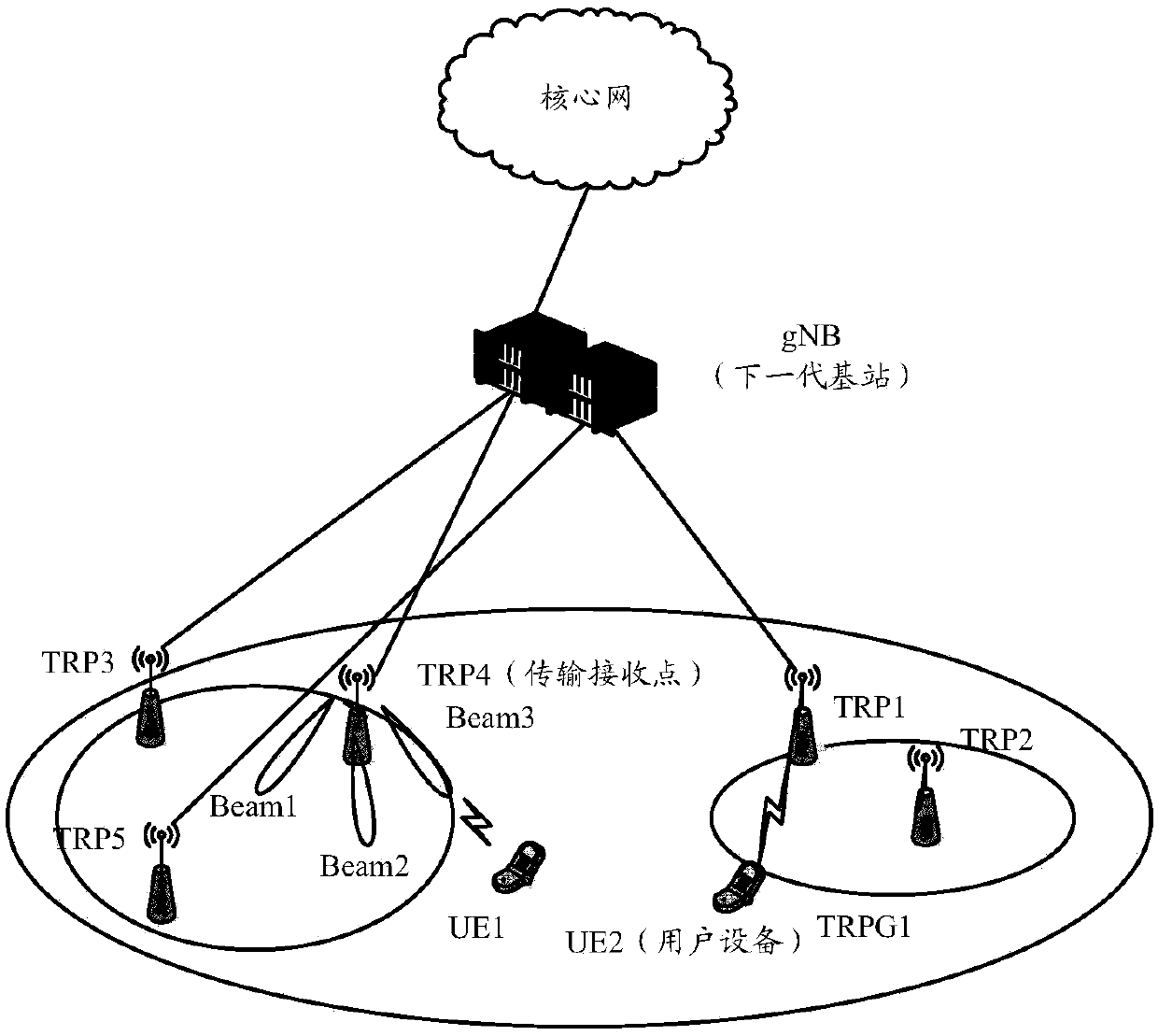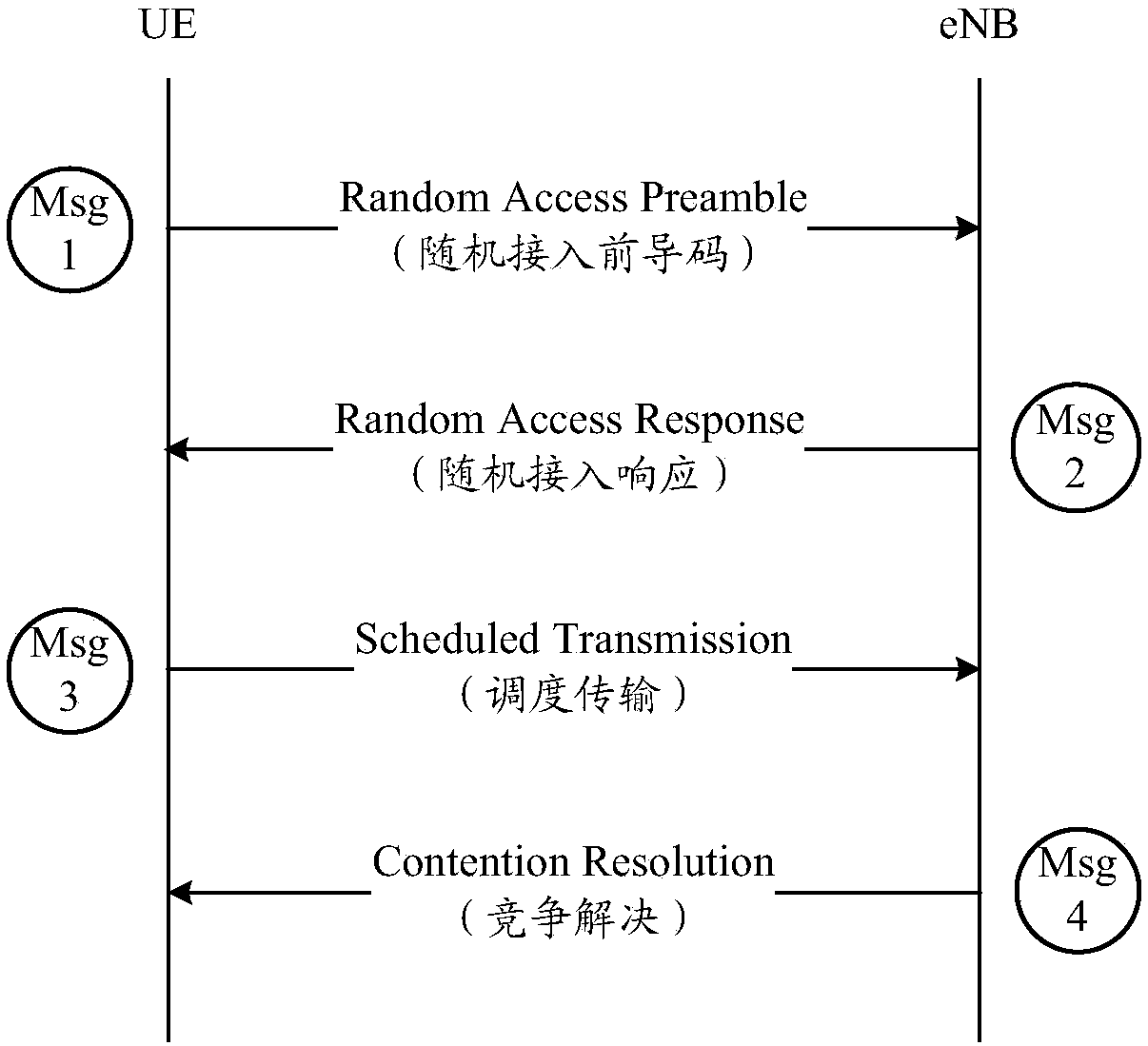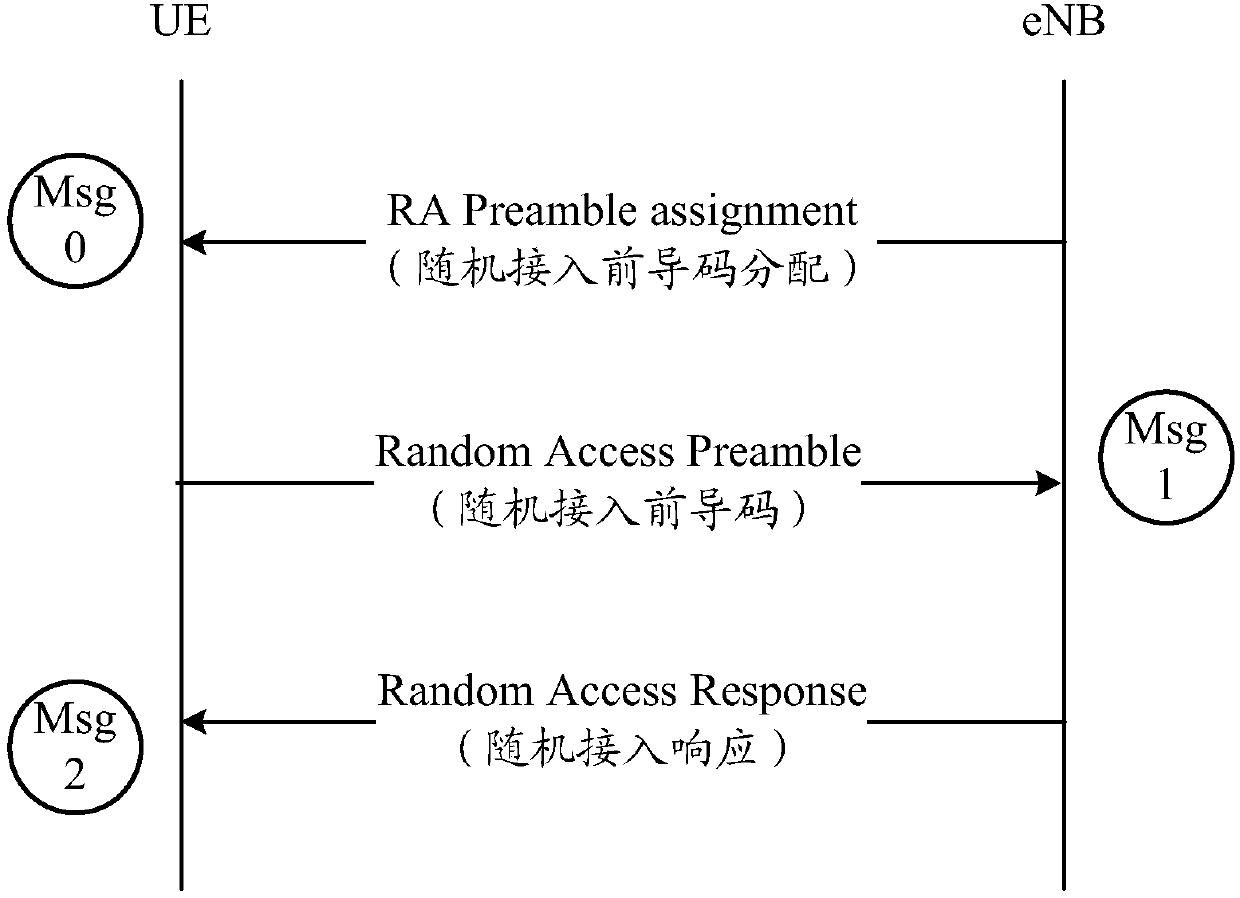Transmission point or beam indication method and apparatus, and transmission method and apparatus of new generation wireless communication system
A wireless communication system and transmission point technology, applied in wireless communication, synchronization device, sustainable communication technology, etc., can solve the problems of reducing system capacity, increasing network side and terminal power consumption, increasing air interface resource overhead, etc.
- Summary
- Abstract
- Description
- Claims
- Application Information
AI Technical Summary
Problems solved by technology
Method used
Image
Examples
Embodiment 1
[0149] In this example, the gNB indicates the TRP / Beam accessed by the UE in the random access response, and uses the specified TRP / Beam in the subsequent random access process.
[0150] Corresponding to TRP / Beam signaling and / or data transmission mode 1, the TRP / Beam information is the TRP / Beam information corresponding to the UE sending Msg1 (preamble).
[0151] Figure 13 It is a schematic diagram of a random access process in Embodiment 1. As shown in the figure, the UE side may include the following steps:
[0152] Step 1300: Essential SI, including cell specific RACH configuration (SFNed transmission) (necessary system information, including cell-specific RACH configuration (sent in single frequency network mode, that is, nodes participating in transmission are sent synchronously with the same time-frequency resources; SFN: Single Frequency Network, single frequency network)).
[0153] The UE receives system information and obtains cell-level random access resource con...
Embodiment 2
[0165] In this example, the gNB indicates the TRP / Beam accessed by the UE in the random access response, and the UE uses the designated TRP / Beam for subsequent transmission after completing the random access.
[0166] Corresponding to TRP / Beam signaling and / or data transmission mode 1, the TRP / Beam information is the TRP / Beam information corresponding to the UE sending Msg1 (preamble). Embodiment 2 is to avoid interference caused by UE wrongly using TRP / Beam resources before the contention is resolved.
[0167] Figure 14 It is a schematic diagram of the random access process in Embodiment 2. As shown in the figure, the UE side may include the following steps:
[0168] Step 1400: Essential SI, including cell specific RACH configuration (SFNed transmission).
[0169] The UE receives system information and obtains cell-level random access resource configuration (including PRACH resources, preamble configuration, etc.), and the system information is sent synchronously by all or...
Embodiment 3
[0182] In this example, the gNB indicates all TRP / Beam information in the cell. After sending Msg1, the UE detects the TRP / Beam where it is based on all TRP / Beam information in the cell, and completes random access.
[0183] Corresponding to TRP / Beam signaling and / or data transmission mode 2, the TRP / Beam information indicates all or part of the transmission points or beam information of the cell.
[0184] Figure 15 It is a schematic diagram of the random access process in Embodiment 3. As shown in the figure, the UE side may include the following steps:
[0185] Step 1500: Essential SI, including cell specific RACH configuration (SFNed transmission).
[0186] The UE receives system information and obtains cell-level random access resource configuration (including PRACH resources, preamble configuration, etc.), and the system information is sent synchronously by all or a part of the transmission points or beams in the cell.
[0187] Step 1501: Msg1: Preamble.
[0188] The ...
PUM
 Login to View More
Login to View More Abstract
Description
Claims
Application Information
 Login to View More
Login to View More - R&D Engineer
- R&D Manager
- IP Professional
- Industry Leading Data Capabilities
- Powerful AI technology
- Patent DNA Extraction
Browse by: Latest US Patents, China's latest patents, Technical Efficacy Thesaurus, Application Domain, Technology Topic, Popular Technical Reports.
© 2024 PatSnap. All rights reserved.Legal|Privacy policy|Modern Slavery Act Transparency Statement|Sitemap|About US| Contact US: help@patsnap.com










